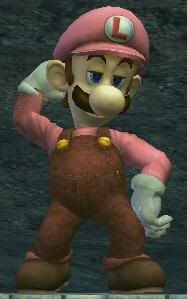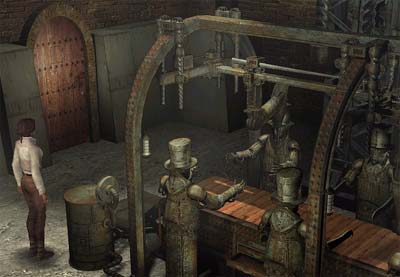Not to turn this into a blog or something, but I'm gonna take a minute to list games I've recently started (for the first time) and finished (for the 1st time). To keep the info flowing fun fast and free, I'll give you first impressions of the games I started, and final impressions of those I completed. There are quite a few, so this is gonna be divided into a few editions. Maybe it'll become a running weekly feature - it'll make a nice addition to the pool of abandoned ideas we've had for those. Before I get ahead of myself, let me catch up on the last month.
Special Recognition for Starting and Finishing:
Gunman Clive (3DS eShop)
Is Gunman Clive worth a look? Well, it only costs $2, though I imagine you'll spend more time feeling good about supporting an indie developer than you will playing through this forty-minute story. It feels like a Mega Man fangame, deriving all its ideas from that classic series, yet not delivering enough individuality or scope to stick with you or warrant a replay. For those that can't get enough Mega Man, it won't be a waste of time, just a fun little shooter/platformer with a neat (if rudimentary) visual presentation. It's hard to separate my first from final impressions of this game, as I beat it in one sitting.
Games Started:
Darksiders 2 (Xbox 360)
A severe change of pace from the first game, not for its tacked on RPG features (everyone loves floating DMG numbers!), but for providing a real organic world and a distinct avatar to control. The combat's got a smoother feel; Death feels swift and precise, in contrast to the brutally unwieldy War (the first game's protagonist). Likewise, Death climbs and scrambles like the Prince of Persia (Sands of Time), while War bounced and hovered like Ratchet (Ratchet & Clank). This isn't so much a strict improvement as it is a fitting change of pace; Death's skillset is appropriate for Death, as War's was for War. They're different characters and should handle differently. A lot of action games get this wrong, simply tweaking speed and strength parameters rather than the entire engine. Is it a coincidence that Darksiders II has a new engine to go with the new hero? Maybe, but it works perfectly.
Crashmo (3DS eShop)
This is a puzzle game. Not even puzzle action. Just static, stare you in the face puzzles. Don't let the reviews (and Intelligent Design's pedigree) fool you; the game is an exact clone of Tetris puzzles. You have to jump to the top of structures you make, but since there's no punishment for failing jumps, it's not a platformer, as some have erroneously claimed. After finishing eight of ten main worlds (ten puzzles each), I'm not sure I'm going to finish it. Puzzles just reach that word scramble point where it's like, yeah, I can probably solve this, but it's gonna take a long time and leave me so frustrated that I won't be satisfied in the end. It has a decent amount of content (150+ puzzles for $10), but as someone who doesn't really like puzzle games at all, I can't tell you why you should spend the money instead of just grabbing a newspaper and flipping to the word games. Do they make newspapers anymore? I don't know. Probably not.
Games Finished:
Darksiders (Xbox 360)
For some reason this game felt the need to go out on a terrible note with an interminable final dungeon and a laughably easy final boss. I also got real distracted because I wanted to start Darksiders II, which I had already bought (hey, it was on sale for $15!). Anyway, nice artwork, nice setting and a great combination of styles. There's not a ton to go back to, as such simple puzzles lose their fun with repetition and combat is done better elsewhere, but a game worth playing once.
Strania - The Stellar Machina (XBLA)
This is kind of a lie, because I only beat it on Normal difficulty, which truncates the final boss battle. A tribute to Contra III? (see later). Strania is a fantastic G.Rev shmup for XBLA that I don't think anyone played or heard of. Even shmup fans were oblivious, too concerned about what the next Treasure re-release would be. G.Rev is one of the more renowned latter-day shmup-developers (as renowned as you can get from making shmups), particularly noted for their late Dreamcast releases Under Defeat and Border Down. While I haven't played those, Strania satiates the craving for 2.5D shmuppage reminiscent of the PlayStation era (R-Type Delta, Einhaender, G-Darius). The gameplay provides a unique dichotomy of aggressive close-ranged combat and defensive sniping, boss battle gauntlets, and a relief from the bullet hell that now dominates the genre (Ikaruga, Touhou, Cave games).
SML3: Warioland (GB / 3DS VC)
Wario's very first starring role! I'm a passing Wario fan (_NOT_ Wariofan), favoring him in most Mario spinoffs (Party, Kart, etc.) for his mean and obnoxious personality and inclination toward raw power. Raw power is a guaranteed OD, etc. I even had a stint maining him in Brawl. Wario himself really is what makes this game - he's a delight to control, making Mario seem like a halfy (handicapped individual) by comparison. The platforming may be woefully static and undercooked, but Wario makes it all work. I'll write a post later about the character and the game's inheritance from Super Mario World and Donkey Kong Country.
Donkey Kong Country 2 (SNES / Wii VC)
I think I covered this pretty well earlier in the week. Took me a long time to beat (though the game clock only records ~5 hours), but I'll be playing it again, possibly even seeking out that 102%. I'll probably spend more time on it than planned now that Nintendo took down DKC1 and DKC3, leaving no reasonable way to play them aside from ILLEGAL emulation.





















